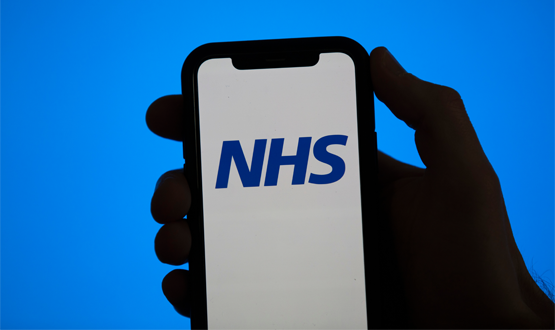Let’s stop pointless reorganisations on NHS IT
- 28 December 2022

Dr Marcus Baw argues that 2022 has shown once again that the answer to NHS technology is definitely not to have another cycle of wasteful reorganisation.
2022 has to be the year of proving beyond all doubt that NHS technology doesn’t need another Reorganise, Strategy and Report. We’ve had all of those and more in the past.
They’ve all failed, because they didn’t have any way to bring in new ideas and new thinking. Here are some examples:
NHSX: It’s an impressive feat to achieve almost nothing over four years while making so much noise in the health tech space that they might at least have achieved something useful by accident, but NHS is the poster child for dumb and wasteful reorganisation.
NHSX was reorganised into being out of thin air during the Matt Hancock ascent stage, as a way to bypass the old, stuffy ways of NHS Digital and NHS England when it came to NHS tech. It ended up causing two years of chaos, confusion and inertia while it was set up, and another two years of chaos, confusion and inertia while it was being broken up for spare parts. I’m a Celebrity – get me out of NHSX.
Merging NHSE & NHSD: Next January, NHS Digital and NHS England are to be merged, this time it’s both a reorganisation and the result of a report (the Wade-Gery one, notable for nine excellent and unarguable recommendations, none of which will be enacted in any meaningful way apart from the easy one – reorganise! Merge NHSD and NHSE!).
And so we embark upon another couple of years of nobody making any bold decisions because of fear for their jobs, status, or career prospects. And it’s another impetus for the talented and knowledgeable within the NHS to decide they’d rather take the double or triple pay and ‘boil off’ like petroleum fumes into the private sector. What remains after they have gone is the heavy, bituminous residue which makes progress in NHS IT so sludge-y.
And the rest: Some of us will remember other failed reorganisation cycles of the past – NPfiT being a key one, but also SHAs, GDEs and LHCREs – and the ongoing shuffle towards Integrated Care Systems, an almost comedic cargo-culting of those words ‘Integrated Care’ without any of the actual meaning. And the dozens of strategies and reports that have whizzed by over the past decade without really moving the dial on our daily experience of dysfunctional NHS IT.
No matter how supposedly forward-thinking the executive summary is behind the reorganisation, you can’t escape the fundamental lack of new ideas. “Reorganise, Strategy and Report” thinking has failed and is still failing, and it’s seemingly all that our senior NHS IT leadership have got to offer.
Maybe that’s not surprising because such leaders are often parachuted in from other industries, with an ‘excited toddler meets startup consultancy’ view of the world, and they have no appreciation of how to play the delicate instrument of NHS IT.
Yes, it is an instrument, a hugely complex one, and exceedingly hard to play – like the Antagonistic Undecagonstring that appears in Iain. M. Banks’ space opera Culture – incredibly hard, but it CAN be played, it just takes a lifetime to learn. NHS IT takes similar levels of perseverance (but you won’t usually need to grow any extra limbs).
First you learn the basics – the cell biology – the individuals within it and their types, the anatomy – its shape and structure, and then the physiology – how it works and is meant to work. Then you start learning the pathology – what can go wrong. And in order to bring something new to the NHS IT table you have to have a grounding in other sciences – in this case computing, software, and modern tech practices.
Bring all this together and you can actually achieve something useful. Pretend it is an ‘optional’ extra, an unnecessary burden of knowledge, and you are no better than a scoundrel impersonating a surgeon or an airline pilot.
What particularly sticks in the craw of clinicians, health informaticians, NHS IT specialists, CCIOs and CIOs all over the land, is when the latest new ‘saviour’ of NHS IT comes to keynote Digital Health Summer School, and rather than telling us how they’re going to make everyone’s job easier, they admit (in what they had probably hoped would be a disarmingly, charmingly, refreshingly honest way) that they “hadn’t realised NHS IT would be so hard”. No, you hadn’t. Yes, we had. Maybe next time put one of our own community in charge? In the USA, the top job at the ONC, the body that runs health IT nationally, is always awarded to a clinician leader.
But this cannot happen in the UK because of the glass ceiling which ensures that nobody from within the NHS IT world with any clue about how it functions, what is needed, or how to achieve it at scale and without breaking the bank can ascend up to the level where they might start to put that experience into practice. These jobs are quasi-political appointments, often without open advertisement or competition, into ‘acting Lord High Tsar Health Tech’ type roles – the ‘acting’ bit there to fudge the lack of proper recruitment procedure.
The end of the road for Reorganise, Strategy, Report thinking
But all that may be besides the point. I think we might have simply reached the hard limit of what improvements can be made to the NHS through the doctrine of Reorganise, Strategy and Report. Further expensive experiments in Digital Transformation Theatre can only waste more money, time and talent, when we should be asking the people who know already. There is no shortcut to this. You can’t gain the career-long insights of a clinician or a software developer through buying a Gartner seat and reading the Wachter Report.
If you want to make a better surgical instrument you ask a surgeon and a medical instrument engineer to collaborate on the job. It might take time and a number of iterations, but if the surgical instrument really turns out to BE better, it will be adopted everywhere, organically and enthusiastically – without having to be ‘fired out of a cannon’ at the whole NHS. You don’t start by mandating at national level that by some future date all surgical tools should be somehow, vaguely, ‘transformed’. And you can’t expect that one improved surgical instrument to ‘transform’ all of surgery either. That process too is incremental.
So I’m predicting that the real innovation of the future will come through letting clinicians and technologists collaborate directly, and produce small, individually almost trivial, innovations. But innovations which summed up together can transform the care of our patients and the working lives of our clinicians.
If you stand back and look at the model of the wider science, technology and communications world we live in, at how new any technology goes from a niche idea to being ubiquitous, the process is rarely initiated by those who think they are in charge.
Next year I’ll be delighting you all with a monthly opinion piece here in Digital Health going into more detail about the arguments I’ve started to lay out in the end of year round up. As someone who was once described (to my actual face, and in an intro to a friendly audience!) as Marcus ‘Marmite’ Baw (“you either love him or you hate him”), I look forward to the responses it will generate and hope we can all learn something from each other.





7 Comments
A wonderful reflection in a true marmite fashion but surely one that we could all manage to nibble at if on the right piece of toast!
It opens the same debate that Jon did when he did his gossip column piece on who will be the next NHS CIO and why and when. Surely it simply has to be someone from within the ‘system’ this time. Someone who has got a scare or two, someone who has spared with Mary over the years, someone who knows what it means to get this right and will be willing to listen first and foremost.
It is time for us to have hope and that should be attached to whomever is the next NHS CIO.
If you think its you apply, don’t let it be someone who has simply got Gartner to brief them before the interview, if indeed there even is an interview…
Thank you Marcus for being marmite.
thank you Marcus: great fun and wisdom. It reminds me of the quote which was often referred to when I joined the NHS in the 90s: “We trained hard—but it seemed that every time we were beginning to form up into teams we were reorganized. I was to learn later in life that we tend to meet any new situation by reorganizing, and what a wonderful method it can be for creating the illusion of progress while actually producing confusion, inefficiency, and demoralization.”
― Petronius Arbiter
What a refreshing read – this resonates so well with my own NHS experience.
I started my NHS Trust in an “integrated Trust” then the “first step to revolutionising the NHS by linking primary, secondary, tertiary and Mental Health Care”, then to the Local Health Authority where I helped set up five PCTs, then to NPfIT, then to an SHA, then back to CfH (NPfIT minus Granger) then finally escaping to the relative stability of a MH Trust which after morphing into a Foundation Trust then merged with the provider arm of a now defunct PCT.
When I left NPfIT I observed that fractional distillation seemed to be occurring – the heat and pressure saw much of the IT talent evaporating from the NHS leaving a sticky, tarry residue behind.
If NHSE see that IT health professionals are not just the bunch of glossy numpties that inhabited NHSX then this will help.
Putting NHSD into E is as foolish a misstep as creating X and will have to be undone.
The one good thing about X was that it was a magnet for vacuous idiots who could at least be easily identified, rounded up and sacked.
I love your writing Marcus. Weeping and laughing as I read, encouraged and in despair at the same time. Hurray for including collaboration in here – enabling good design and reflection spaces is a skill set for the informatics sphere too, along with the clinical and technical ones.
Thanks, Marcus – beautifully put!
I’ve lived through even more IM&T Strategies than you have: would you agree that one of the characteristics of NHS IT Strategies is the complete elimination of *all* record of any preceding experiences – so that nothing is ever – or could ever be – learned from previous failures? (I’m still missing “Shared Record Professional Guidance” btw)
Does anyone expect that things will be different when NHSX & NHS Digital are subsumed into a slimmed down NHS England?
*Why* is domain knowledge regarded as a disadvantage for senior appointments in the NHS – not only in NHS Informatics & IT?
Really curious.
Thank you, Marcus for taking us to the Zone Of Uncomfortable Debate so eloquently. I agree with most of what you say but will to some extent defend the idea of NHSX, it was at least an acknowledgement of the previous failure of NHS IT central and it did produce a “tech vision” which envisaged an open ecosystem for NHS IT which might have been a step in the right direction had the vision ever had a practical plan to implement it. Discuss.
Comments are closed.